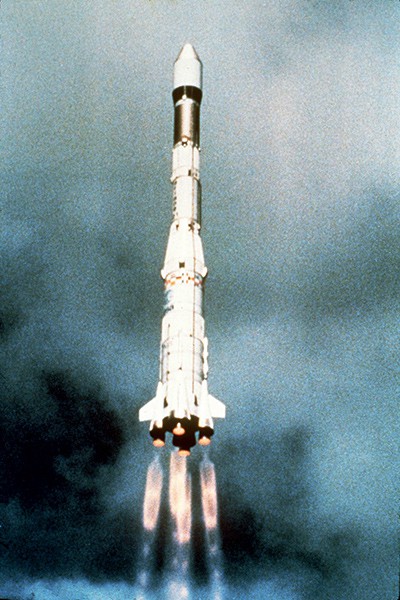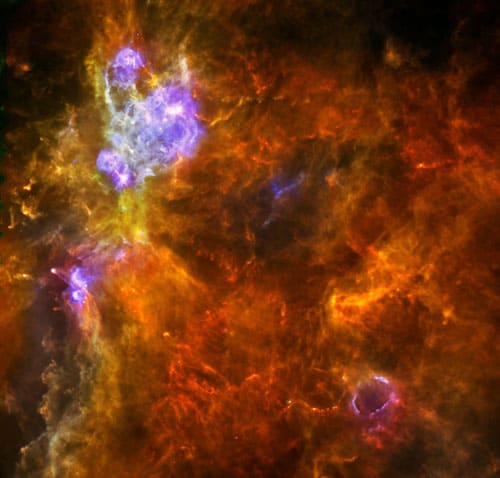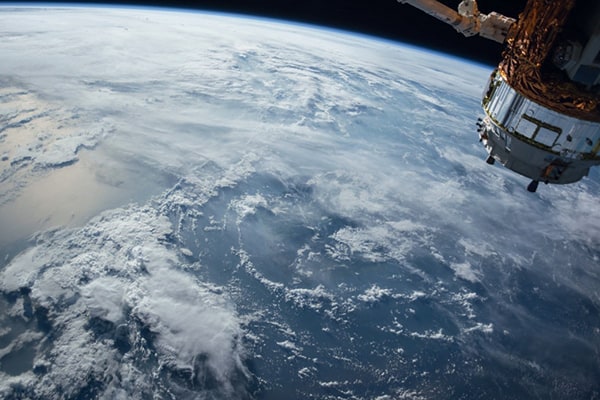Ariane: Driving Force in the European Space Sector

The rocket, first launched 40 years ago, has raised Europe to the ranks of global space-sector leaders. And, Ariane has become number one in the world in launching commercial satellites, a market currently experiencing a lot of upheaval.
On November 26, 2019, a month before Christmas, the Ariane 5 ECA rocket rose into the skies from French Guiana to put two satellites into orbit. An historic event: it was Ariane’s 250th flight since it was first launched in December 1979. Europe’s space sector had a bumpy start, though. In the 1960s, only two world powers – the United States and Russia – had the necessary technologies for putting something into orbit. The first attempts by CECLES (precursor to the European Space Agency) ended in the failure of the Europa rocket. France, however, insisted that European partners should develop a common space program, and an agreement for this was signed on July 31, 1979. The Ariane project was born.
1973
At France’s initiative, several European countries (Germany, the United Kingdom and Italy) sign an agreement with France to establish a European system for launching civilian satellites. Ariane is born.
1984
Ariane 3, a rocket with an elongated fuselage capable of transporting a payload of 2.7 tons, puts the Telecom 1A satellite into orbit. The first successful flight, which paradoxically happens before that of Ariane 2.

1979
On December 23, after two abortive attempts, Ariane 1 takes off from the Kourou space facility in French Guiana, powered by its Viking engine. Europe joins the ranks of global space powers.
1996
Designed as a heavy-lift launcher to carry payloads into geostationary orbit, Ariane 5, equipped with its new Vulcain engine, explodes in flight. Of the following 120 launches, only four fail.
Six years later, Ariane 1 took flight. “However, the institutional market, less developed than in the United States, was too limited to cover the program’s fixed costs,” explains Emeric Lhomme (H.04), commercial director for the ArianeGroup’s launcher programs. “So, we decided to concentrate on the private-satellite market. The private sector was part of the equation from the start.” Arianespace was founded at the beginning of the 1980s to develop and monetize the European rocket. In only a few years, it became the world’s number one commercial space transporter. The launchers evolved and carried heavier and heavier loads (4.3 tons for Ariane 4). “In the United States, a law requires that American satellites be launched with American rockets. In Europe, this national advantage doesn’t exist,” Emeric Lhomme points out. “You have to be competitive to succeed, including in your own market.”
Economic takeoff
In 1986, when the United States retreated temporarily following the Challenger shuttle disaster, Arianespace found itself with a quasi-monopoly position in the commercial satellite market. To remain competitive and to be able to handle increasingly heavy geostationary satellites, Arianespace began to develop a totally new kind of launcher. It would become the Ariane 5. Capable of carrying payloads of more than 10 tons, the rocket maintained its dominance in the field of commercial launches, with a market share of more than 50% at the beginning of the 2010s. The growing presence of SpaceX changed everything, however. Able to charge prices almost half those of Arianespace (thanks to subsidies from NASA), Elon Musk’s company managed to put 110 tons into orbit in 2017 (compared to Ariane’s 59 tons). Europe was forced to adapt.
In the United States, the law requires the use of American rockets. Not in Europe.
While the SpaceX Falcon 9 puts the focus on reusable parts (some elements can be recuperated after a mission), Europe went in another direction for the future Ariane 6, set to be launched this year. “We didn’t feel that the reusable model would be very profitable for us, since it depends on a significant number of launches,” Emeric Lhomme says. “We decided instead to develop a rocket that is more economical (almost 40% cheaper to build than Ariane 5), more versatile, and, most of all, can be produced much more quickly.” Ariane hasn’t given up on the idea of a reusable launcher, though. A new division, ArianeWorks, created in 2019, will handle its development.

2004
The last stage of the Ariane 5 G+ fires its Rosetta probe, created and developed by the European Space Agency, toward the comet 67P/Churyumov-Gerasimenko, to learn more about the composition of its core.
2009
Ariane puts the Planck space observatory and the Herschel infrared telescope into orbit. Both have been developed by the European Space Agency. They will study the birth of stars, the formation of galaxies, and the age and composition of the universe.
Fruit d’un partenariat entre ArianeGroup et le CNES, ArianeWorks est conçue comme une plateforme d’accélération, destinée à préparer au plus vite les futures générations de lanceurs européens. « L’idée est de regrouper, sur un même plateau, une équipe réduite pour mener des projets en open innovation et en mode agile, explique Pierre- Guy Amand (E.12), directeur de l’innovation d’ArianeGroup. C’est impératif pour réduire les cycles d’innovation et s’adapter aux exigences des clients. » Dans cette même logique, ArianeGroup a rejoint en début d’année l’ESA_Lab@HEC, partenariat initié entre l’Agence spatiale européenne et HEC Paris. « Dans les années à venir, l’industrie spatiale va exploser et de nouveaux acteurs vont émerger, prédit Pierre- Guy Amand. Identifier et évaluer les deeptech aujourd’hui pour en tirer le meilleur parti, c’est capital pour l’avenir d’Ariane ». À l’ère du New Space, et sur un marché en pleine mutation, Ariane devra innover pour rester en tête dans la course aux étoiles.
2014
Airbus and Safran announce the creation of a joint venture, Airbus Safran Launchers. After Ariane acquires CNES’s shares in the venture, it is renamed ArianeGroup.
2018
Last mission for Ariane 5 ES, which puts into orbit four satellites for the Galileo navigation system. The next satellites for the geolocalization system will be carried by Ariane 6.
2019
On October 29, ArianeGroup inaugurates a new, 6000-square-meter plant in Bremen, Germany, where the upper stages of Ariane 6 will be assembled using innovative “industry 4.0 technologies”.
Postponed twice, first because of an anomaly and then because of bad weather, the 250th flight of the Ariane rocket takes place on November 26. It carries two communications satellites (one British, one Egyptian) into space.
Published by Thomas Lestavel


